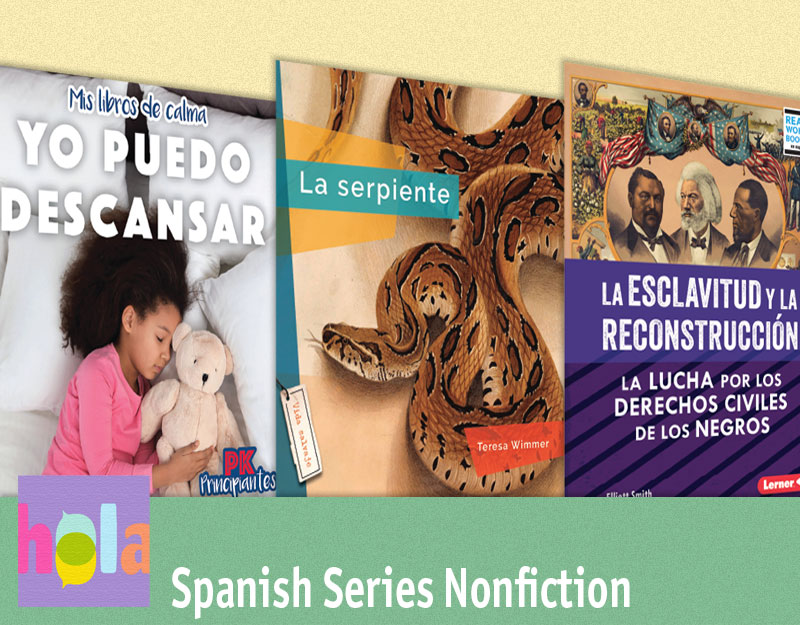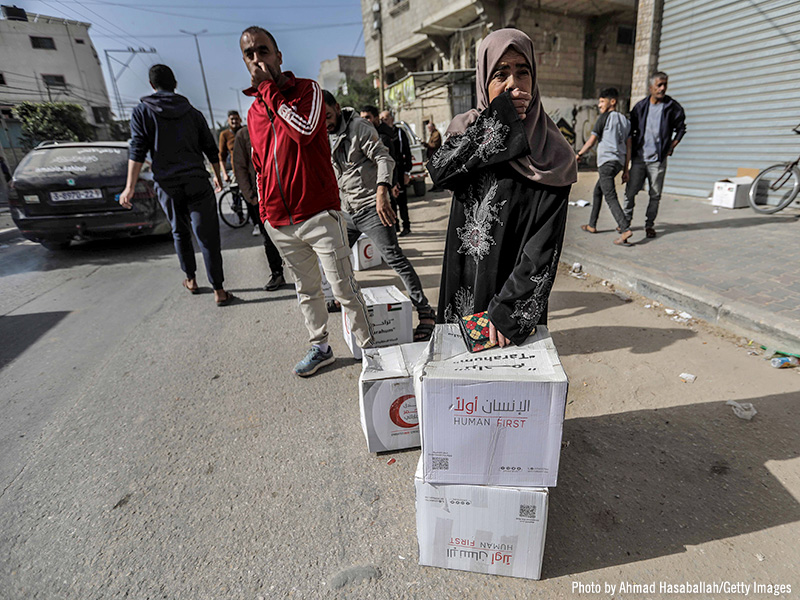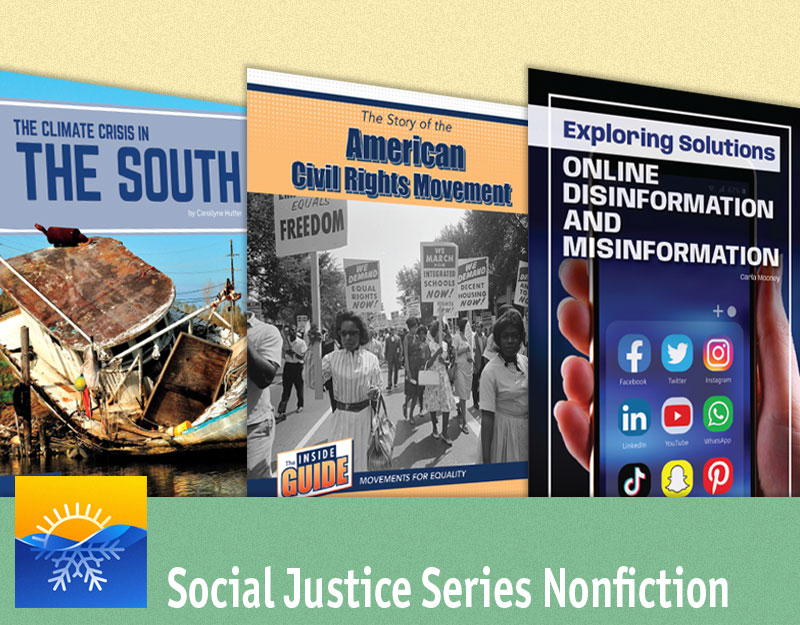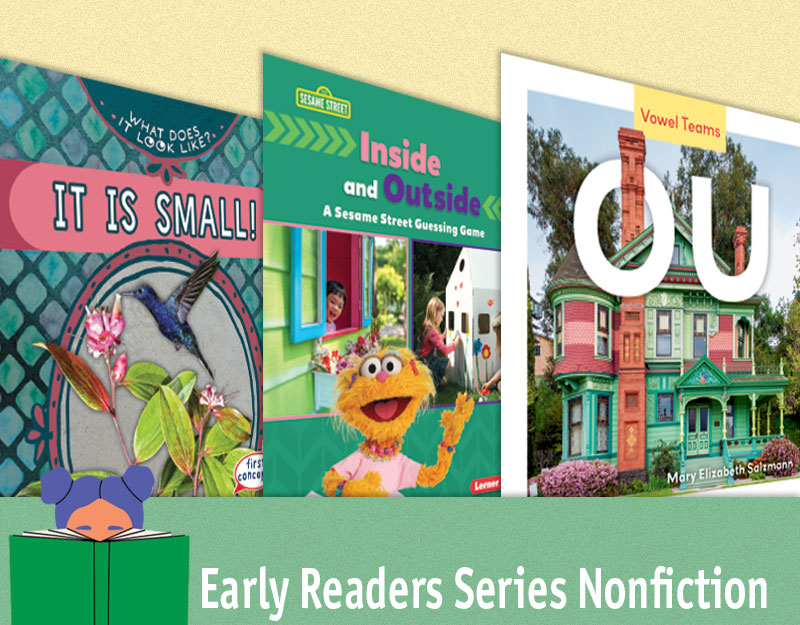Rebound
Rebound
Written by Kwame Alexander and Illustrated by Dawud Anyabwile
Published in 2018 by Houghton Mifflin Harcourt
Grades 4-8
ISBN: 978-0-544-86813-7
Book Review
In this much-anticipated prequel to his Newbery-winning novel The Crossover, Kwame Alexander draws from similar themes and the rhythm of basketball to transport readers back in time to 1988 with another novel-in-verse narrated by Josh and Jordan’s father (of The Crossover) as a young man. Before he was Chuck “Da Man” Bell, Charlie is a boy on the verge of adolescence struggling to know who he is or what to do after the death of his father. He skips school, shirks chores and school work in favor of reading comic books, and finds himself mixed up with friends who steal from an elderly neighbor. After he is sent to his grandparents’ home, Charlie begins to heal, in large part, thanks to his Grandma’s fried chicken, his cousin Roxie’s steadfast belief in his basketball skills, and his Granddaddy’s motto: “hustle and grind, peace of mind”. References to Michael Jordan, roller rinks, and Slick Rick add authenticity to the late 1980s setting. Dawud Anyabwile’s illustrations complement Alexander’s poems and give readers a visual connection to Charlie’s inner thoughts while paying homage to his love of comics. Ideal as a class read aloud that can invite student voices, Rebound will delight fans of Alexander’s work and is sure to inspire readers new to his work to find a deeper appreciation for the power of poetry.
Teaching Ideas / Invitations for Your Classroom:
Grades 4-8
Prequel/Sequel. Students may know the way the Star Wars franchise included an original trilogy, a prequel trilogy, and a sequel trilogy. Alexander plays with the prequel/sequel time continuum in Rebound by setting the majority of the book in 1988 but ending the book with a series of poems set thirty years later in 2018. Readers of The Crossover will better understand how the events in Rebound fit into the sequence of events of the original story. Support students to play with time and setting by writing their own prequel/sequel stories to a book they have already read. What events could take place prior to the original story and what events could take place after? Support students to consider whose perspective each story should be in by noticing the ways that Rebound and The Crossover are told from father and son perspectives, respectively. Offer students various story mapping tools such as timelines or story maps before beginning the writing process to help them visualize the events they want to describe. Unveil student writing in a publishing celebration that has audience members guess the original story the prequel or sequel was inspired by.
ADVERTISEMENT
ADVERTISEMENT
From the Page to the Stage. Watch Kwame Alexander at a school visit reading from Rebound. Discuss with students his message to get the “words of the page onto the stage”. Have students select their favorite poems from Rebound to read aloud. Give students options to read with a partner, in a small group, or in front of the whole class. Support students to use their voice to mirror the rhythm of the poem. Encourage the rereading of poems to build fluency and prosody and to experiment with the impact of different vocal choices. Consider partnering with a music teacher to provide an instrumental backdrop to your students’ poetry reading.
Historical Fiction Novels-in-Verse. Set in 1988, Rebound is considered a historical fiction novel-in-verse. Gather other historical fiction books that are written in verse to explore with students the ways in which this particular form of writing supports new understandings about another time period. Consider organizing students in historical fiction text clubs that allow students to read multiple books with varying club members to share reactions and opinions about the books, specific poems, and the study of different time periods. Have text clubs present their favorite poems as a way of explaining the characters, key plot points, and central themes of the story they read. The following are some suggested historical fiction novels-in-verse: Kaleidoscope Eyes by Jen Bryant (Vietnam War), All the Broken Pieces by Ann Burg (Vietnam War), Witness by Karen Hesse (1924 Vermont), Inside Out and Back Again by Thanhha Lai (1975, Fall of Saigon), Almost Forever by Maria Testa (1967-1969, Vietnam War). For readers who want to continue reading novels-in-verse here are other recommended titles: The Crossover and Booked by Kwame Alexander; Brown Girl Dreaming, Locomotion, and Peace, Locomotion by Jacqueline Woodson; The Red Pencil by Andrea Davis Pinkney; Shanghai Messenger by Andrea Cheng, North of Everything by Craig Crist-Evans; Minn and Jake’s Almost Terrible Summer by Janet Wong; Reaching for the Sun by Tracie Vaughn Zimmer; Sweetgrass Basket by Marlene Carvell; Where I Live by Eileen Spinelli.
Spotlight on Michael Jordan: Picture Book Pairing. Pair Rebound with the picture book Salt in his Shoes: Michael Jordan in Pursuit of a Dream by Michael Jordan’s mother and sister, Doloris Jordan and Roslyn M. Jordan. Identify moments in Rebound where specific mention of Jordan and his basketball prowess are mentioned to contribute to the sense of setting. Discuss with students the values of patience, determination, and hard work that are explored in both books. What are the comparisons that can be made about Charlie Bell’s and Michael Jordan’s childhoods? In what ways are they both influenced by their families? What is the impact of faith and hope on each boy’s life and how they overcome fear and doubt? As an extension, share with students NBA highlights of Jordan’s best plays from NBA playoff games and an interview of Jordan at the age of 21. Students may also want to further their learning by connecting with the life story of a contemporary basketball star as well.
“Those Shoes”: Text Set. Pair Rebound with the picture book Those Shoes by Maribeth Boelts and Ghost by Jason Reynolds. Identify moments in Rebound where Charlie’s hope for Air Jordans provides particular anxiety and self-doubt. Discuss with students the ways that Charlie’s desire for “those shoes” mirrors Jeremy’s in Those Shoes and Castle “Ghost” Cranshaw’s in Ghost. How does each character handle the social pressure associated with having a particular brand of shoe? Support students to connect this was things that create social angst today. Under Armour clothing? Beyblades? Pokemon cards? Fortnite? In what ways can students deescalate the perceived need for these things through the ways they talk to one another during lunch or on the playground? Encourage students to draw connections between the ways both protagonists find belonging not through material things but through genuine friendship and family acceptance.
Poetic Forms Duet Model: The Crossover. In Rebound, Alexander uses some of the same poetic forms found in The Crossover such as conversation poems but he also plays with new forms as seen in poems like “Phone Message from CJ” and “The Last Shot”. After reading both books, have students select poems to analyze the poetic structures Alexander uses including white space, length of stanzas, line breaks, use of italics, bold words, and capitalization. What forms are particular to each book? What forms find a home in both books? Have students select poems that they want to pay tribute to in some way by writing their own versions of the poem. We can pay tribute to an existing poem by drawing from the title, use of language, structures, sounds, and themes. Share these tributes through a class performance or on a physical or digital bulletin board for others to comment on.
ADVERTISEMENT
ADVERTISEMENT
Responding to Trauma: Grieving the Death of a Parent. The death of a parent is central to both The Crossover and Rebound. Discuss with students reasons why Alexander may have chosen this kind of trauma to span both protagonists’ childhoods. Consider having a class conversation about the ways the characters handle the death of a parent. Be open to the ways students may make connections to their own experiences with the death of a loved one. For students interested in reading other works of fiction that explore themes of life, death, and grieving consider gathering books like Natalie Babbit’s Tuck Everlasting, Out of the Dust by Karen Hesse, and Walk Two Moons by Sharon Creech, and Free Verse by Sarah Dooley. For other suggestions, consult the Children’s Book Reviews from the Language Arts issue focused on experiencing and overcoming trauma written by our Classroom Bookshelf team.
Action-Inspired Poetry. Partner with a physical education teacher or take students to the gymnasium or playground to craft some action-inspired poetry. In both The Crossover and Rebound, Kwame Alexander crafts his poetry to intentionally mirror the sounds and rhythms of basketball. Have students write action-inspired poetry after engaging with one another in these spaces. What sounds, sights, and feelings can they draw from and include in their poetry? Consider splitting the class in half to have some students engaging in physical activity while others capture what they see and hear through writing. Draw students’ attention to the ways Alexander plays with repetition, alliteration, font size, capitalization, and punctuation to accentuate the feeling of motion and rhythmic sounds that can be found in basketball.
Say Yes. Listen to Kwame Alexander discuss Rebound in a video interview. He explains the way the rhythm of basketball mirrors the rhythm of life: “Dribble, fake, swoosh, miss.” Discuss with students their reaction to Alexander’s journey to publication and the ways in which his poetry and the characters he creates encourage a “say yes” attitude towards life. Consider having students write their own “say yes” lists to themselves in their journals that serve as personal promises or reminders to take risks, try new things, and embrace the unknown.
Critical Literacy
Grades 6-8
Marijuana and Criminal Justice. Towards the end of the book, Charlie is at a roller skating rink when a gun is fired. In fleeing the scene, Charlie and his friends are arrested because there are three sandwich bags filled with marijuana in his friend’s backpack. While Charlie is bailed out from jail by his Granddaddy and his grandpa’s law enforcement friend, Mr. Smith, the fate of the other boys is unknown. Discuss with students their reaction to these events. Share with students articles and graphs on the black/white marijuana gap such as those found in The Washington Post and the ACLU. What conclusions do students draw about racially-biased marijuana arrests? In what ways do they think Kwame Alexander intentionally includes these events in the book to spark discussion about drugs, possession, arrests, and criminal justice? Support students to investigate current legislation in their home states about the legalization of marijuana offering a space for students to debate their thinking by using evidence from a variety of sources.
Further Investigation
Online Resources
Kwame Alexander’s Site
Follow Kwame Alexander on Twitter and Facebook
https://twitter.com/kwamealexander
https://www.facebook.com/KwameAlexanderBooks
Mr. Shu Reads Interview with Kwame Alexander
http://mrschureads.blogspot.com/2015/02/newbery-medalist-kwame-alexander.html
Kwame Alexander Interview about Rebound
http://www.fox32chicago.com/mornings/326182375-video
NBA Highlights Video of Michael Jordan’s Plays
https://www.youtube.com/watch?v=cuLprHh_BRg
Michael Jordan, Age 21 Interview
https://www.youtube.com/watch?v=ywdsjzi0s18
Language Arts Children’s Book Reviews: Experiencing and Overcoming Trauma
http://www.ncte.org/library/NCTEFiles/Resources/Journals/LA/0945-may2017/LA0945Reviews.pdf
ACLU article on The War on Marijuana
https://www.aclu.org/issues/mass-incarceration/smart-justice/war-marijuana-black-and-white
The Washington Post: The Black/White Marijuana Gap
Books
Alexander, K. (2016). Booked. New York, NY: Houghton Mifflin Harcourt.
Alexander, K. (2014). The crossover. New York, NY: Houghton Mifflin Harcourt.
Alexander, K. (2013). He said she said. New York, NY: Amistad Press.
Alexander, K. (2009). And then you know. Kingsport, TN: Word of Mouth Books.
Alexander, K. (2007). Crush: Love poems. Kingsport, TN: Word of Mouth Books.
Babbit, N. (1975). Tuck everlasting. New York, NY: Scholastic.
Boelts, M. (2007). Those shoes. Somerville, MA: Candlewick.
Bryant, J. (2010). Kaleidoscope eyes. New York, NY: Yearling.
Burg, A. E. (2012). All the broken pieces. New York, NY: Scholastic.
Carvell, M. (2005). Sweetgrass basket. New York, NY: Dutton Books for Young Readers.
Cheng, A. (2015). Shanghai messenger. New York, NY: Lee and Low Books.
Creech, S. (1994). Walk two moons. New York, NY: HarperCollins.
Crist-Evans, C. (2004). North of everything. Somerville, MA: Candlewick.
Dooley, S. (2016). Free verse. New York, NY: G.P. Putnman’s Sons.
Hesse, K. (1997). Out of the dust. New York, NY: Scholastic.
Hesse, K. (2003). Witness. New York, NY: Scholastic.
Jordan, D. & Jordan, R.M. Salt in his shoes: Michael Jordan in pursuit of a dream. Simon and Schuster Books for Young Readers.
Lai, T. (2013). Inside out and back again. New York, NY: HarperCollins.
Pinkney, A.D. (2014). The red pencil. New York, NY: Little Brown.
Reynolds, J. (2016). Ghost. New York, NY: Atheneum Books for Young Readers.
Spinelli, E. (2011). Where I live. New York, NY: Dial Books.
Testa, M. (2007). Almost forever. Somerville, MA: Candlewick.
Wong, J. (2008). Minn and Jake’s almost terrible summer. New York, NY: Farrar, Strauss, & Giroux.
Woodson, J. (2010). Locomotion. New York, NY: Nancy Paulsen Books.
Woodson, J. (2010). Peace, locomotion. New York, NY: Nancy Paulsen Books.
Woodson, J. (2014). Brown girl dreaming. Nancy Paulsen Books.
Zimmer, T. V. (2007). Reaching for the sun. New York, NY: Bloomsbury.
Filed under: Comics & Graphic Novels, Fiction, Fiction Chapter Books, Historical Fiction, Novels, Poetry, Verse Novels
About Katie Cunningham
Katie is a Professor of Literacy and English Education at Manhattanville College. There she is also the Director of the Advanced Certificate Program in Social and Emotional Learning and Whole Child Education. Her work focuses on children’s literature, joyful literacy methods, and literacy leadership. Katie is the author of Story: Still the Heart of Literacy Learning and co-author of Literacy Leadership in Changing Schools. Her book Start with Joy: Designing Literacy Learning for Student Happiness will be released September 2019. She is passionate about the power of stories to transform lives.
ADVERTISEMENT
ADVERTISEMENT
SLJ Blog Network
The Moral Dilemma of THE MONSTER AT THE END OF THIS BOOK
Cover Reveal and Q&A: The One and Only Googoosh with Azadeh Westergaard
Winnie-The-Pooh | Review
Parsing Religion in Public Schools
ADVERTISEMENT








